| Home | Nature Diary | Flora | Fauna | Fungi | Events |
| Rugs | Dogs/Cats | Smallholding Devon | Smallholding Cornwall | About |
| 2024 | 2025 |
| << July 2024 | August 2024 | September 2024 >> |
|
||||||||||||||||||||||||||||||
|
1st: Newly hatched Newly hatched Large white caterpillars. We imagine these guys will pupate in three or four weeks and then probably over winter before hatching in the spring!! Whilst the large white is not a conservation concern, numbers have declined in recent years. As we want to eat the micro-greens this lot hatched on 😏, we have removed them and will be feeding them cabbage instead. The bottom two images show what we think are Cabbage looper caterpillars, also found on our micro greens. In the same way the Large whites are thus called because they are.. large and white, these Cabbage loopers, surprise surprise, eat cabbage. We purchased one from South Molton market this morning - we wonder how long it will take them to demolish it??    |
||||||||||||||||||||||||||||||
|
2nd: The joy of being a dog The dogs are loving the land at the moment - there is a lot to smell and see and dig. We think Oak field is all our favourites.  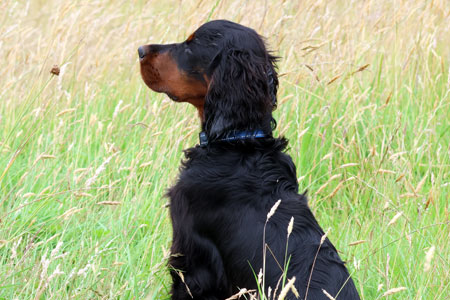   |
||||||||||||||||||||||||||||||
|
3rd: Feeding their young What a joy watching female house sparrows collecting live and dried mealworms today and flying off with them in their mouths... We hope their chicks appreciated them.    |
||||||||||||||||||||||||||||||
|
4th: On the up The numbers of insects seems to be growing each day - bumble bees in particular (this one is the Buff tailed bumble bee) are to be found on the buddleia, willow herb, brambles, thistles, cow parsley and more just now. The Ruby tiger moth was resting in the raspberry patch on the allotment and the tiny Leafhopper (cicadella viridis) came into view in the grass whilst looking at another insect altogether. We have also seen oodles of Meadow grasshoppers today whilst the Common Green one just won't stay still enough to photograph!!    |
||||||||||||||||||||||||||||||
|
5th: Mating is a dangerous game for this spider A Nursery web spider. Apparently they don't build webs to trap their food but are so fast they are able to catch prey on the go. The web seen here is most likely been built to protect their youngsters as they hatch (although we saw no signs of any when we looked). Mating is a dangerous game for male Nursery web spiders, so they bring a gift of food to the female before laying perfectly still and pretending to be dead. When the female investigates the food, the male suddenly jumps up and then mates with her, presumably before making a very quick exit!!!!!!   |
||||||||||||||||||||||||||||||
|
6th: Seed dispersal!! Both efficient and beautiful AND, as the harvestman spider (Leiobunum rotundum) shows, a rather comfortable resting place... Broad-leaved willow herb and Spear thistle. (photos from the end of last month although lots still to see)    |
||||||||||||||||||||||||||||||
|
7th: Blending in and Standing out The Goldenrod crab female spider is able to adapt her colouring to her surroundings in order to blend in and so can be green through to white. This one was a little more bluey white and when we first spotted her, we thought it was a piece of moss or similar. She is very tiny, just a few mm (the thumb and finger to the left show the size comparison) but they can be quite fierce predators apparently, eating prey far bigger than themselves.. The Black-and-yellow longhorn beetle on the other hand is bold, designed to stand out and scare predators and this one (head to thorax) was around three cms long (they can however grow to over five).    |
||||||||||||||||||||||||||||||
|
8th: The Early bumble bee There are 25 species of bumble bee in the UK - think we have identified a mere three or four so far!!! This one, an Early bumble bee is so called because they first appear in early spring. This one is in fact likely to be from a second brood!  |
||||||||||||||||||||||||||||||
9th: Worlds within worlds! |
||||||||||||||||||||||||||||||
|
10th: More bombus (bumble bees) Pretty sure these two are Small Garden bumble bees, although one is possibly older than the other and losing its colour? They spent ages feeding on this thistle and were a joy to watch.  |
||||||||||||||||||||||||||||||
11th: More delight at the bird feeding station  |
||||||||||||||||||||||||||||||
|
12th: Caterpillars The Large White caterpillars are all now in a large netted cage - we have collected lots more as each time we go to pick lettuce from the greenhouse, we find more. We do have a 'sacrifice' bed but there have been too many to put them all there, so we have brought them in and set them up with some greens from the greenhouse as well as cabbage (the later lasts a lot longer). A lot of the original hatches died - we expect this is natural, they cannot all survive after all, but once they get beyond a certain size they seem to then thrive. We also have a few Admiral caterpillars in a smaller cage - not sure how many as they tend to hide in a web of leaves and come out simply to feed. In addition we now have a few pupa from what we think may be Cabbage Loopers and others (all found in the Greenhouse) and four Herald moth caterpillars found on the Purple Willow in Oak field. Along with lots of sawfly larva, they were decimating the trees and as the trees are young and not yet established, we felt we needed to remove the beasties. The sawfly larva were taken to the willow in the old Poultry area where there are a lot more established trees. The photos show the Large Whites plus what may be another Cabbage Looper.    |
||||||||||||||||||||||||||||||
|
13th: Babies And here are the Nursery spider's youngsters, safely tucked up in their web, whilst mum prowls the perimeter. They are more stripey versions of their parents but are a whole lot smaller. Quite extraordinary    |
||||||||||||||||||||||||||||||
|
14th: Muckle Another day when we had to make the right decision and say goodbye. Muckle gave us ten lambs in five years - and they were pretty much always cute as chips. We remember selling her first ram lamb with real regret cos he was a stunner. And then we kept both her lambs from 2020, Miss Muckle and Master Muckle, the later of whom we still have and who is a real, real softie. Muckle was very independent, she was not a flock animal at all and was often seen grazing or chilling well away from the rest of the sheep. She was always fine, it was just how she was. She has been skinny for a while, since the winter really, and despise loads of grass and some hard feed topping up, she didn't put on any weight at all. And then in the last few weeks, she began to lose more and in the last few days it became obvious that her ability to digest and chew the cud was very poor. We will miss her friendly face, her love of chuckles and the fact she never cared two hoots about the mad dogs racing past her in the fields.      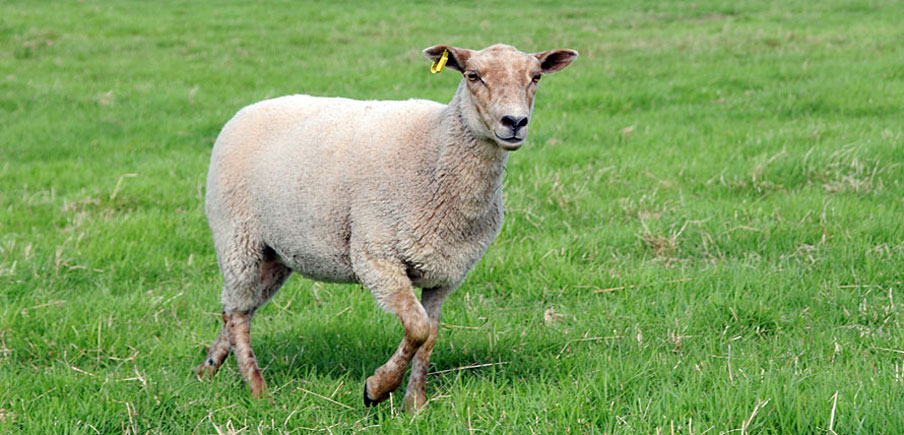 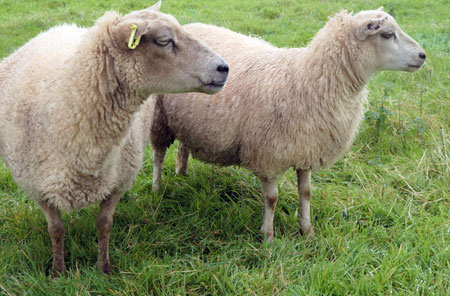 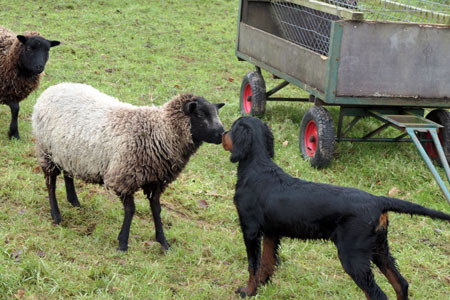 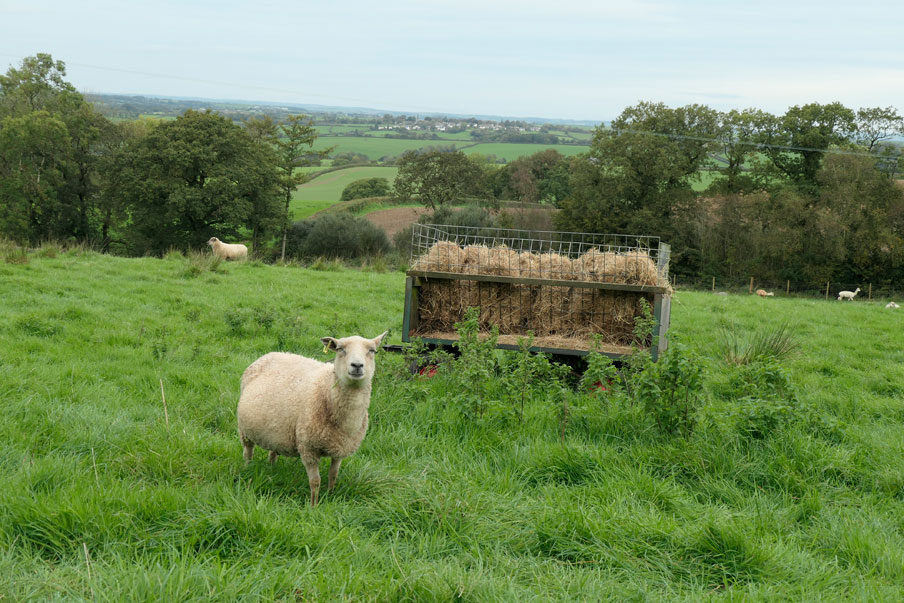 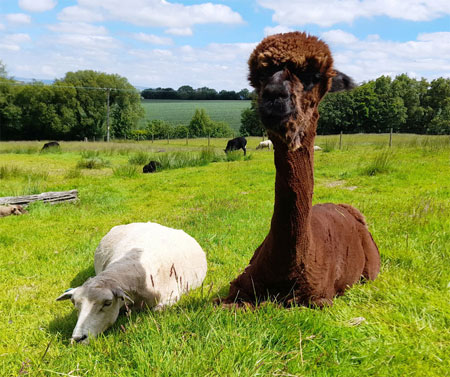 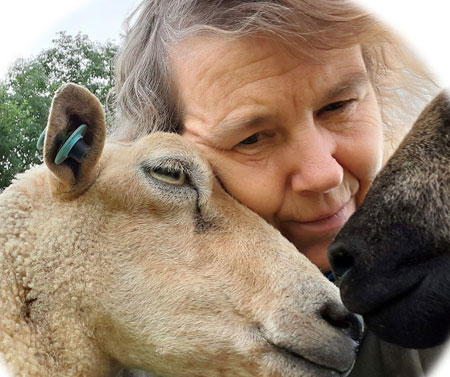 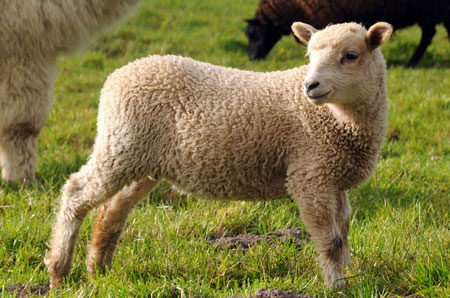  |
||||||||||||||||||||||||||||||
|
15th: Mad dogs PIgeon staring and straw digging - just two of the zillion activities that keep this lot happy every day!!!   |
||||||||||||||||||||||||||||||
|
16th: The Silver Y Our first emerging moth from the Cabbage Looper et al group. The caterpillar was green and one of a few found in our greenhouse greens - we didn't know what it was going to turn into and when. The pupa was all wrapped up in soil and small bits of debris and wood and only took three-ish weeks to develop into this beautiful moth. We took photos and then let it go. Apparently they migrate and can come over in huge numbers. They fly by day and night and in theory can be seen at any time of year!! The bottom right photo shows one we coincidentally caught in the moth trap last night so you can clearly see the 'Y' shape on the wing. And the left photo show the rather gorgeous Ruby Footman who we also caught - another new species, one of nine last night, (Our total now is over 50..)    |
||||||||||||||||||||||||||||||
|
17th: Kite.... ever hopeful.... 🤣 And no, she didn't get any. The goats are far too greedy to share.... 😋 🤣   |
||||||||||||||||||||||||||||||
|
18th: Lots going on today The Cabbage whites are starting to pupate, as is one of the possible Herald moth caterpillars. We also found a pill-shaped pupa in the nettles with the skin of the caterpillar attached to the outside. No idea what it is. Then we spotted a rather lovely looking grey spotted 'caterpillar' on the figwort in the old Poultry area. Turns out this is in fact a Figwort Sawfly larva. They are easily mistaken for caterpillars but have rather more legs, usually six sets of prolegs which, along with the three pairs of true legs at the front, often mean they have legs along the length of their bodies. Moth and butterfly caterpillars usually have two to five pairs of prolegs, three of true legs and a gap in between. The slimy looking creatures are young sawfly larva from the poplar trees, same as those from the 30th June - you can clearly see the legs on that photo. Cleaning out the caterpillars and getting fresh leaves/ food for them is quite a time consuming job but terribly fascinating - and at the rate some of them are starting to pupate won't be going on much longer!!     |
||||||||||||||||||||||||||||||
19th: Lurking in the coldframes...  |
||||||||||||||||||||||||||||||
|
20th: Plant Hunt Just some of the cuttings/ plants being offered at the Sustainable Chulmleigh Plant Hunt being held here on Sunday 8th September... been busy collecting seeds too. All will be native, wild or wildlife friendly and come from plants here on our land!!     |
||||||||||||||||||||||||||||||
21st Magpie Moth: An extraordinarily beautiful moth, common in the UK with caterpillars that look like them and over winter in the caterpillar stage. This is the second time we have seen one on our land and both times have been during the day.   |
||||||||||||||||||||||||||||||
|
22nd: Oak field moth trapping For the first time, we set the moth trap in the shelter in Oak field last night. We caught 13 moths and six species, two of which were new. We were mega excited to see we had caught an Elephant Hawk moth. We have a lot of willow herb (the caterpillar food source) so really hoped we would get to see one. Left to right, top to bottom we have: a Ruby Tiger, Elephant hawk moth, Large yellow underwing and a Flame shoulder.     |
||||||||||||||||||||||||||||||
23rd: Adorable   |
||||||||||||||||||||||||||||||
24th: Water droplets   |
||||||||||||||||||||||||||||||
|
25th: The land really is starting to give now.... We have, so far this summer/ autumn on the fruit front, harvested strawberries; red, black and white currants; loganberries; one tree's worth of apples (plenty more to come), rhubarb and in the last couple of weeks, raspberries, and cultivated and wild blackberries. And best of all, we didn't run out of fruit from last year before needing to start on this year's.   |
||||||||||||||||||||||||||||||
|
26th: Clever camouflage This small beetle, less than a cm in length is aptly named the Thistle Tortoise Beetle - the first photo shows it in its 'tortoise' state. We disturbed it (unintentionally) and it took a good 10 minutes before the legs and antennae reappeared. Had we not spotted it with its legs out, we wouldn't have realised it was even an animal!! Funnily enough, it wasn't within sight of a thistle when we found it but both larva and the adult eat thistles and in some countries they are used as biological control.     |
||||||||||||||||||||||||||||||
|
28th: The beauty of invertebrates Left to right, top to bottom: Blood vein moth, Green shield bug, Meadow grasshopper, Crane fly, Dark bush cricket and Nettle tap moth 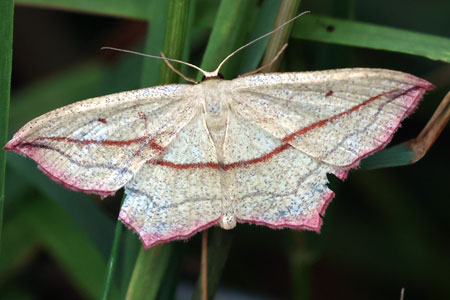  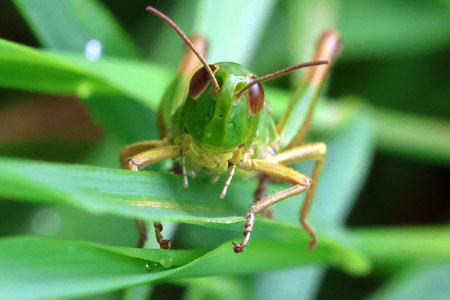 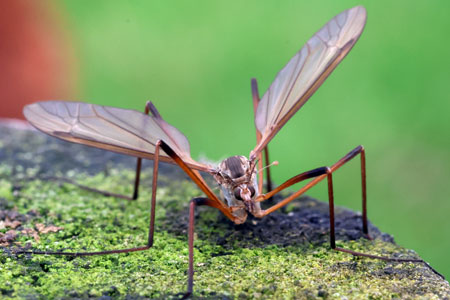   |
||||||||||||||||||||||||||||||
|
29th: Red Admiral This is from our own hatch from a caterpillar we raised on nettles inside a cage. This is what a newly emerged butterfly looks like before it gets ravaged by weather and vegetation. Just stunning!  |
||||||||||||||||||||||||||||||
|
30th: Another fab night using the moth trap Left to right, top to bottom: Black Arches, Setaceous Hebrew Character, Small Wainscot, Maiden's Blush, Large Yellow Underwing, White Shouldered House, Common carpet and Common Marbled Carpet - some of these names are great. The trap was set in the Green Lane and produced our biggest haul to date: over 70 individuals and 17 species! 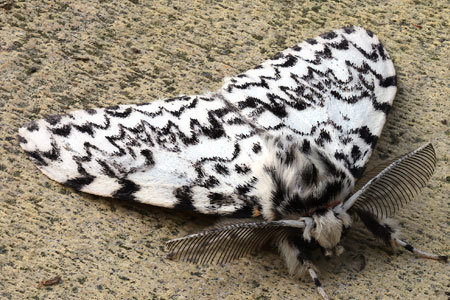  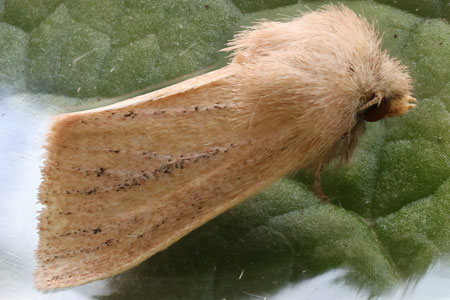  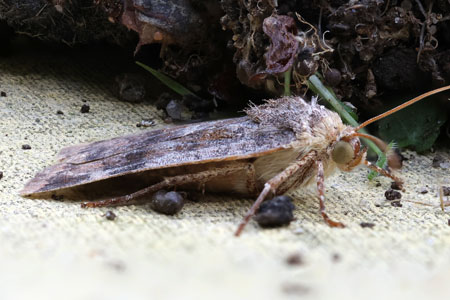  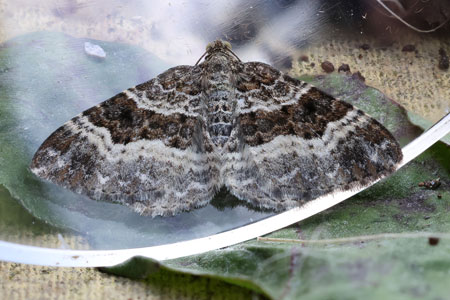  |
||||||||||||||||||||||||||||||
|
31st: Owl pellet This the second time this month we have found an owl pellet - an din the same place: on the gatepost by Rabbit's gate leading from Goat to Oak field. Experts tell us it is a LIttle Owl which is very exciting. We have never seen them here but will most definitely be keeping an eye out now. The pellet was full of beetle carcasses.   |
